 October brings the awareness… It has gained a lot of attention over the past few years and helped to raise women’s awareness of this aspect of health they should not take lightly. I wanted to take this time to fully educate and extend the awareness on the topic of breast cancer by exposing a few myths about this disease and remind people to be aware year round. The following information is provided courtesy of National Cancer Institute:
October brings the awareness… It has gained a lot of attention over the past few years and helped to raise women’s awareness of this aspect of health they should not take lightly. I wanted to take this time to fully educate and extend the awareness on the topic of breast cancer by exposing a few myths about this disease and remind people to be aware year round. The following information is provided courtesy of National Cancer Institute:
The Breast Cancer Myth
Finding a lump in your breast means you have breast cancer.
The Truth
Only a small percentage of breast lumps turn out to be cancer. But if you discover a persistent lump in your breast or notice any changes in breast tissue, it should never be ignored. It is very important that you see a physician for a clinical breast exam. He or she may possibly order breast imaging studies to determine if this lump is of concern or not.
Take charge of your health by performing routine breast self-exams, establishing ongoing communication with your doctor, getting an annual clinical breast exam, and scheduling your routine screening mammograms.
The Breast Cancer Myth
Men do not get breast cancer; it affects women only.
The Truth
Quite the contrary, each year it is estimated that approximately 2,190 men will be diagnosed with breast cancer and 410 will die. While this percentage is still small, men should also check themselves periodically by doing a breast self-exam while in the shower and reporting any changes to their physicians.
Breast cancer in men is usually detected as a hard lump underneath the nipple and areola. Men carry a higher mortality than women do, primarily because awareness among men is less and they are less likely to assume a lump is breast cancer, which can cause a delay in seeking treatment.
The Breast Cancer Myth
A mammogram can cause breast cancer to spread.
The Truth
A mammogram, or x-ray of the breast, currently remains the gold standard for the early detection of breast cancer. Breast compression while getting a mammogram cannot cause cancer to spread. According to the National Cancer Institute, “The benefits of mammography, however, nearly always outweigh the potential harm from the radiation exposure. Mammograms require very small doses of radiation. The risk of harm from this radiation exposure is extremely low.”
The standard recommendation is an annual mammographic screening for women beginning at age 40. Base your decision on your physician's recommendation and be sure to discuss any remaining questions or concerns you may have with your physician.
The Breast Cancer Myth
If you have a family history of breast cancer, you are likely to develop breast cancer, too.
The Truth
While women who have a family history of breast cancer are in a higher risk group, most women who have breast cancer have no family history. Statistically only about 10% of individuals diagnosed with breast cancer have a family history of this disease.
If you have a first degree relative with breast cancer: If you have a mother, daughter, or sister who developed breast cancer below the age of 50, you should consider some form of regular diagnostic breast imaging starting 10 years before the age of your relative’s diagnosis.
If you have a second degree relative with breast cancer: If you have had a grandmother or aunt who was diagnosed with breast cancer, your risk increases slightly, but it is not in the same risk category as those who have a first degree relative with breast cancer.
If you have multiple generations diagnosed with breast cancer on the same side of the family, or if there are several individuals who are first degree relatives to one another, or several family members diagnosed under age 50, the probability increases that there is a breast cancer gene contributing to the cause of this familial history.
The Breast Cancer Myth
Breast cancer is contagious.
The Truth
You cannot catch breast cancer or transfer it to someone else's body. Breast cancer is the result of uncontrolled cell growth of mutated cells that begin to spread into other tissues within the breast. However, you can reduce your risk by practicing a healthy lifestyle, being aware of the risk factors, and following an early detection plan so that you will be diagnosed early if breast cancer were to occur.
The Breast Cancer Myth
If the gene mutation BRCA1 or BRCA2 is detected in your DNA, you will definitely develop breast cancer.
The Truth
According to the National Cancer Institute, regarding families who are known to carry BRCA1 or BRCA2, “not every woman in such families carries a harmful BRCA1 or BRCA2 mutation, and not every cancer in such families is linked to a harmful mutation in one of these genes. Furthermore, not every woman who has a harmful BRCA1 or BRCA2 mutation will develop breast and/or ovarian cancer. But, a woman who has inherited a harmful mutation in BRCA1 or BRCA2 is about five times more likely to develop breast cancer than a woman who does not have such a mutation.” For people who discover they have the harmful mutation, there are various proactive measures that can be done to reduce risk. These include taking a hormonal therapy called Tamoxifen or deciding to take a surgical prevention approach which is to have bilateral prophylactic mastectomies, usually done with reconstruction. Most women will also have ovaries and fallopian tubes removed as well since there is no reliable screening test for the early stages of developing ovarian cancer.
The Breast Cancer Myth
Antiperspirants and deodorants cause breast cancer.
The Truth
Researchers at the National Cancer Institute (NCI) are not aware of any conclusive evidence linking the use of underarm antiperspirants or deodorants and the subsequent development of breast cancer.
To throw in a little corporate fitness your way, exercise boosts the immune system and helps you to keep your weight in check. With as little as three hours of exercise per week, or about 30 minutes a day, a woman can start to lower her risk of breast cancer. This doesn’t mean you need a gym membership to start. Power walking is more than sufficient!
Click here for more information about this topic or to continuing supporting the cause year round.






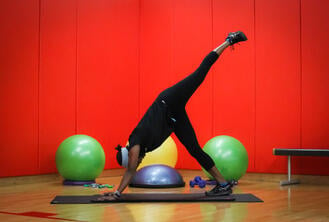
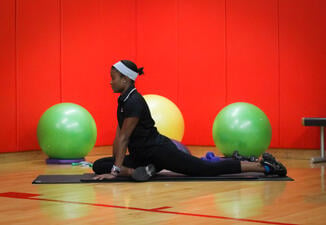
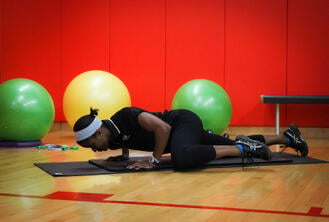
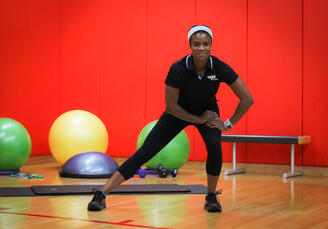
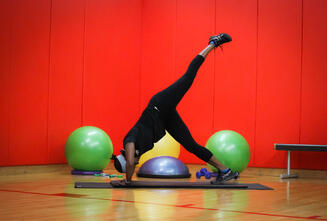
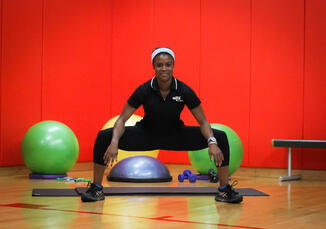

 October brings the awareness… It has gained a lot of attention over the past few years and helped to raise women’s awareness of this aspect of health they should not take lightly. I wanted to take this time to fully educate and extend the awareness on the topic of breast cancer by exposing a few myths about this disease and remind people to be aware year round. The following information is provided courtesy of
October brings the awareness… It has gained a lot of attention over the past few years and helped to raise women’s awareness of this aspect of health they should not take lightly. I wanted to take this time to fully educate and extend the awareness on the topic of breast cancer by exposing a few myths about this disease and remind people to be aware year round. The following information is provided courtesy of  For the past couple of months, we have been able to enjoy the nice, warm weather, cookouts, vacations, and even those occasional lazy days. While summer is not quite over, this time of year marks getting back to your everyday grind, preparing children to go back to school and hopefully including fitness in both of those plans. Why is it important to include fitness you ask? Well, it is no secret that
For the past couple of months, we have been able to enjoy the nice, warm weather, cookouts, vacations, and even those occasional lazy days. While summer is not quite over, this time of year marks getting back to your everyday grind, preparing children to go back to school and hopefully including fitness in both of those plans. Why is it important to include fitness you ask? Well, it is no secret that 
 It’s about that time of year where the weather is getting warmer and the flowers are blooming. May is a wonderful introduction into the summer months and is also a time we celebrate women. Mother’s Day is not the only day to celebrate women, but there is a whole week dedicated to women’s health. For this year, National Women’s Health Week for the US is May 11 – 17. Women can celebrate the generations of women before them that have pioneered the way and take charge of their health to make it a priority. This week focuses on preventive measures to take to improve their health and avoid disease.
It’s about that time of year where the weather is getting warmer and the flowers are blooming. May is a wonderful introduction into the summer months and is also a time we celebrate women. Mother’s Day is not the only day to celebrate women, but there is a whole week dedicated to women’s health. For this year, National Women’s Health Week for the US is May 11 – 17. Women can celebrate the generations of women before them that have pioneered the way and take charge of their health to make it a priority. This week focuses on preventive measures to take to improve their health and avoid disease. Often when we think or talk about having good health, it consists of eating healthy foods and exercising. There are many areas of our lives that we could improve upon health wise—often it seems like there is so much to work on to keep track. However, one segment of health that seems to go by the way side is mental health. Just as muscles lose strength or cardiovascular fitness declines with age, your brain can lose agility and decline in the way that it functions. There is no one way to prevent degenerative diseases of the brain such as Alzheimer’s, but you can start today with the way you live your life to help make your brain healthier. Here are a few tips for great
Often when we think or talk about having good health, it consists of eating healthy foods and exercising. There are many areas of our lives that we could improve upon health wise—often it seems like there is so much to work on to keep track. However, one segment of health that seems to go by the way side is mental health. Just as muscles lose strength or cardiovascular fitness declines with age, your brain can lose agility and decline in the way that it functions. There is no one way to prevent degenerative diseases of the brain such as Alzheimer’s, but you can start today with the way you live your life to help make your brain healthier. Here are a few tips for great